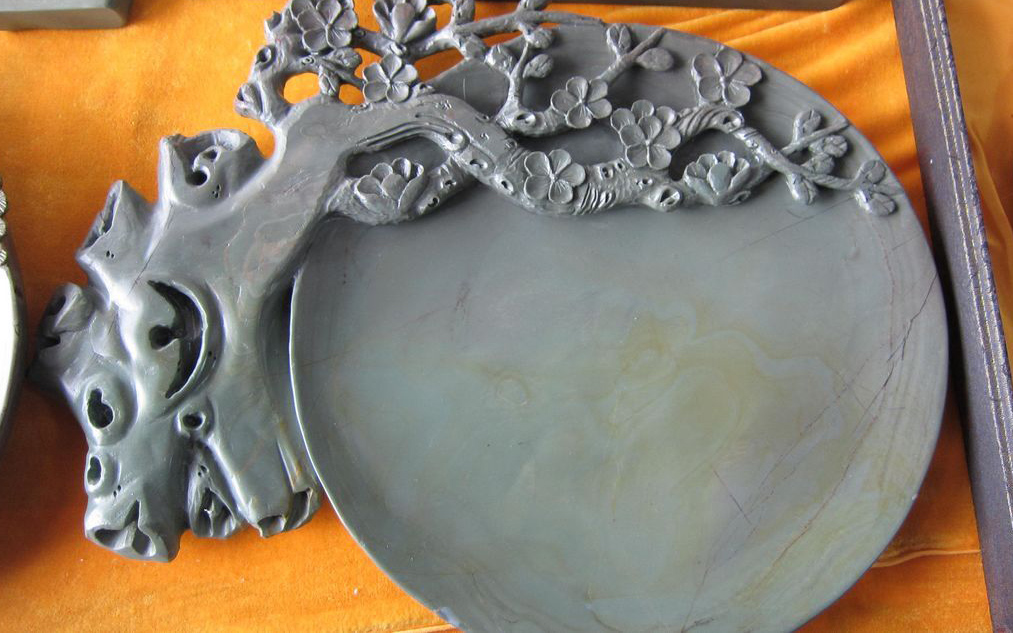Inkstone: Small in size, big in value

An inkstone
Inkstone is one of the Chinese “wen fang si bao,” which literally means “the four treasures in study.” The other three are brush, ink and paper. Inkstones are favored by artists and cultured intellectuals as a collector’s item due to their solid structure, which allows them to endure for a long time.
Their value to collectors was considered so high that in the Song Dynasty (960-1279), one merchant was said to have offered a garden with a mansion in exchange for an inkstone once used by Li Yu, the last emperor of the Southern Tang Dynasty (937-975).
In modern times, inkstones, which used to be only preferred by a minority of people, spread to vast numbers of collectors and literati, especially antique items rich in cultural aspects with high aesthetic value.
In the auction market, the prices for antique inkstones are rising steadily. Since 2007, there has been a unique category of inkstone in the auction market. Even during the years after the financial crisis in 2008, the results of the auction markets for inkstones were striking.
Compared with antique inkstones, the price of modern ones is lower, which is reasonable according to the laws of value. It’s worth noting that modern inkstone culture is undergoing a process of “alienation,” in which the essence or cultural connotations of inkstone are being diluted by the blind pursuit of profit, which has greatly reduced the value of modern inkstones.
